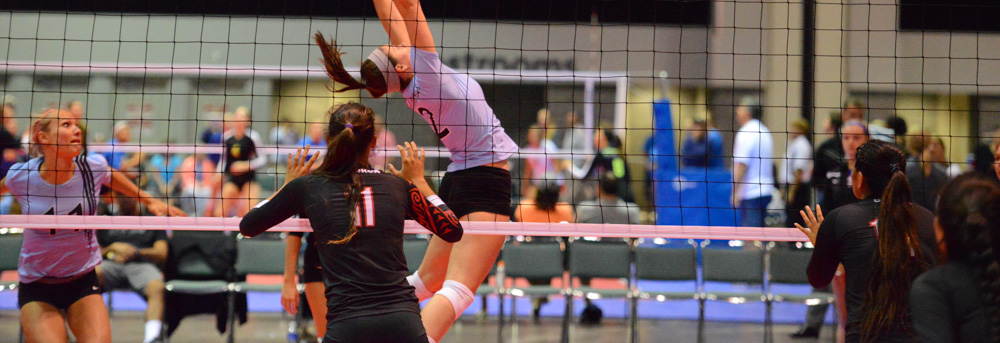It's OK to be Tall
Getting organized starts with good posture
This past weekend was the Carolina Region’s first 14s tournament for the 2015 club volleyball season. While watching teams play across six different courts, one observation jumped out: we have a tremendous opportunity to improve our athletes’ long-term fitness and performance by improving upright posture.
Perhaps our posture reflects the ubiquity of iDevices and hours spent hunched over small screens, or maybe it’s the result being deskbound in school all day, but regardless of the cause, this slumped-shouldered epidemic is fertile ground for performance enhancement. Coaches already understand that cultivating a powerful and durable overhead swing requires good thoracic spine and shoulder mobility – both of which depend on good upright posture.
An athlete who practices getting and staying organized with good upright posture has an immediate advantage over someone who slouches at rest while trying to “bring it” on the court. As we said repeatedly in Body Control Camp: “When are you an athlete? ALL THE TIME!” Given that we’re always an athlete, we should always seek to get – and stay – organized from the top down.
It’s also generally understood that height is an asset in volleyball. Which brings me to the conversation I had with a fellow dad yesterday. His daughter is a natural athlete who is enjoying her first season playing club volleyball. He was talking about how quickly she grew last year, and I gently mentioned that she’d be almost an inch taller if she stood up straight. He said that was a huge issue for them at home, and that they were constantly encouraging her to work on her posture – but when she was growing last year, she became so self-conscious of her height that she actively worked to hunch over so she wouldn’t seem so tall relative to her peers.
Guess we can add peer pressure to the list of postural impediments.
Coaches, here’s to cultivating good posture as we improve core strength this season, and helping our athletes embrace the potential offered by their full, God-given height.
Look at your athlete from the side. Are the ears centered over the shoulders, and are the shoulders centered over the hips? If so, you're in pretty good shape. If not, get organized.
Helpful Cues
- Squeeze glutes
- Engage abs
- Spread the floor
- Deep breath in, thumbs forward, shoulders back, pull your head to the ceiling
Note that the cues for extending the thoracic spine and centering the head over the shoulders are not absolute references, but simply help the athlete "expand" out of a "compressed" slumped-forward posture often accompanied by internally rotated shoulders.
Taking a deep breath in while visualizing a string pulling your head to the ceiling helps to extend the thoracic spine and center the ears over the shoulders. Cueing thumbs forwards and shoulders back creates external rotation and helps center the shoulders over the hips.
Simple encouragement may not be sufficient for all athletes, however. Some may lack balanced core muscle strength or control to establish and maintain good posture -- so continuing to work on core strength and coordination is also important.
